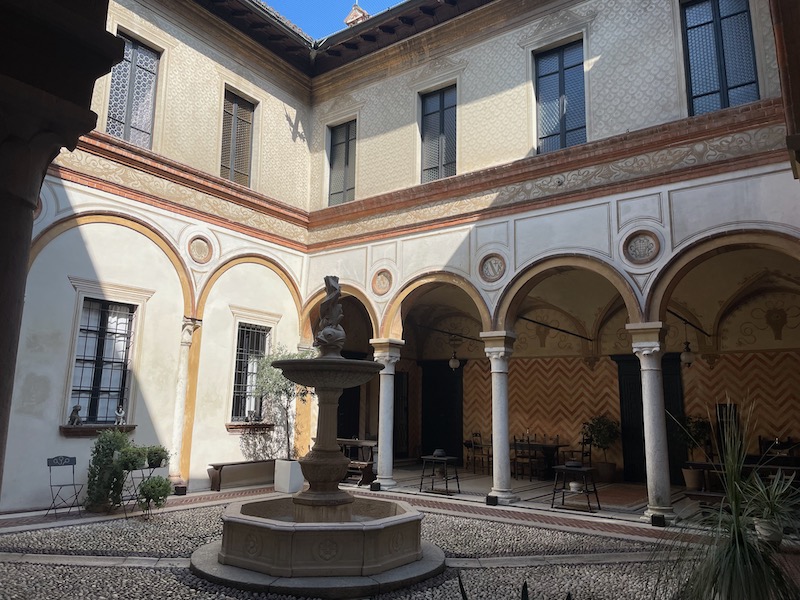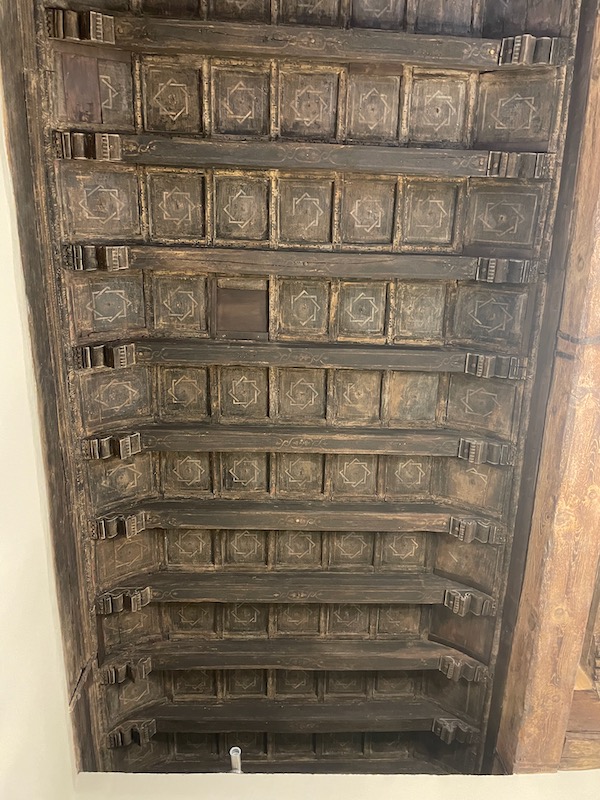Our Blog - Lombardy 2025 - Cremona, Italy
Cremona is another Italian city that I knew nothing about before we added it to our vacation. It seems to be known for 2 things: violins and nougat. There are lots of crooked old streets here where the world's best violins supposedly are crafted. Andrea Amati (1510–80) invented the modern violin here in the 16th century. Although violin-philes continue to revere the Amati name, it was an apprentice of his nephew for whom has wide and lasting fame. In a career that spanned 68 years, Antonio Stradivari (1644–1737) made more than 1,200 instruments, including violas, cellos, harps, guitars, and mandolins, in addition to his fabled violins. They remain the most coveted and most expensive stringed instruments in the world. The other claim to fame is a nougat called "torrone", which is said to have been created in 1441 in honor of a wedding between 2 noble families. It is a nougat shaped like the city's tower (hence the name torrone).
We started our city tour at the Piazza del Comune, which is the main square in town, surrounded by the Duomo, the Torrazzo (big tower), Baptistery, and Palazzo Communale (city hall). As you can see, the tower is located next to the cathedral, and is the symbolic bell tower of Cremona. It is one of the tallest medieval brick bell towers in Europe. It was built in 4 phases between 1230 and 1309. The clock, one of the largest astronomical clocks in the world, was added in 1588. The clock is entirely mechanical and must be wound daily.
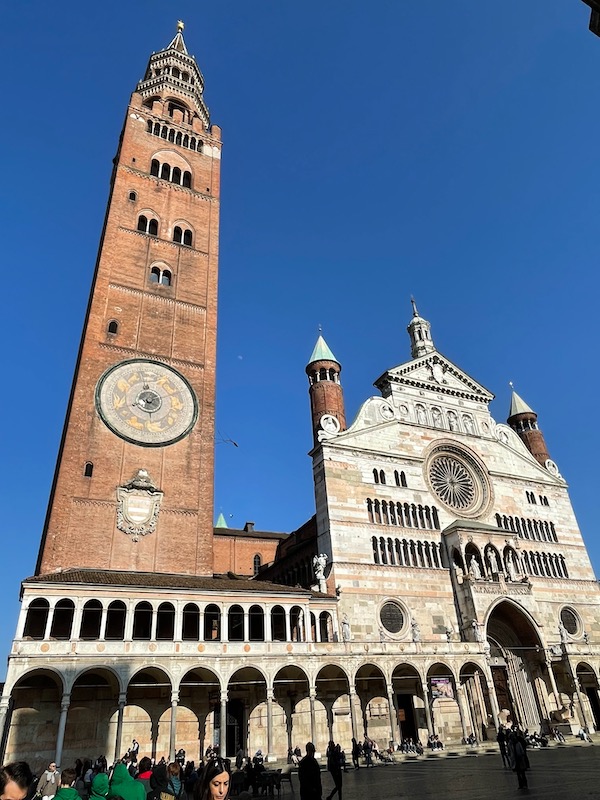
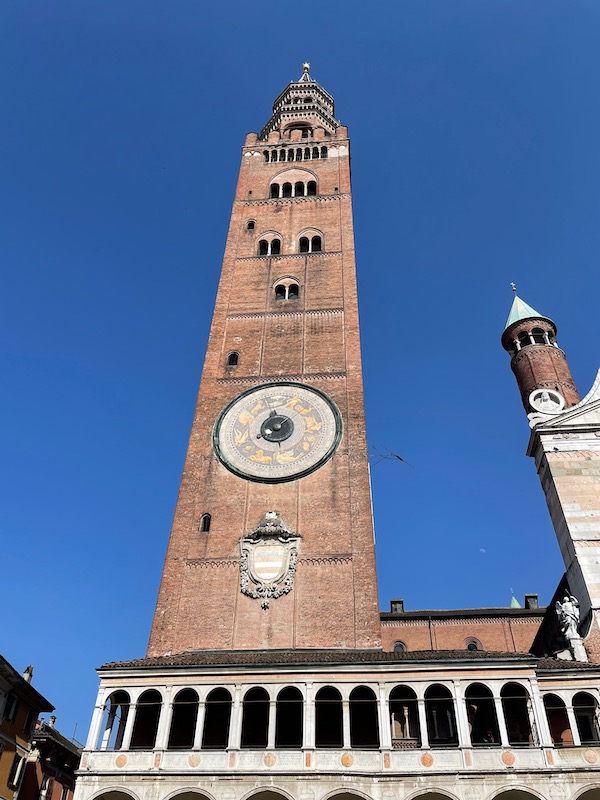
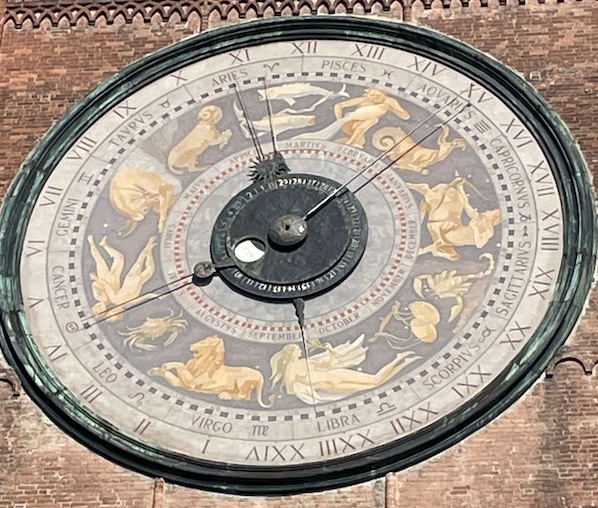
Next is the Duomo (Cathedral) next door. Built starting in 1107, the cathedral is made of brick (which you can't really tell from this view. This side of the Cathedral was covered in marble and equipped with a rose window in 1274 (the sections that look more pink), and the very top was added in 1491 (the sections that look very white). The front is broken up a little by a porch surmounted by a three-arched loggia containing statues of Sant'Imerio, the Madonna with Child, and Sant'Omobono, added around 1320.
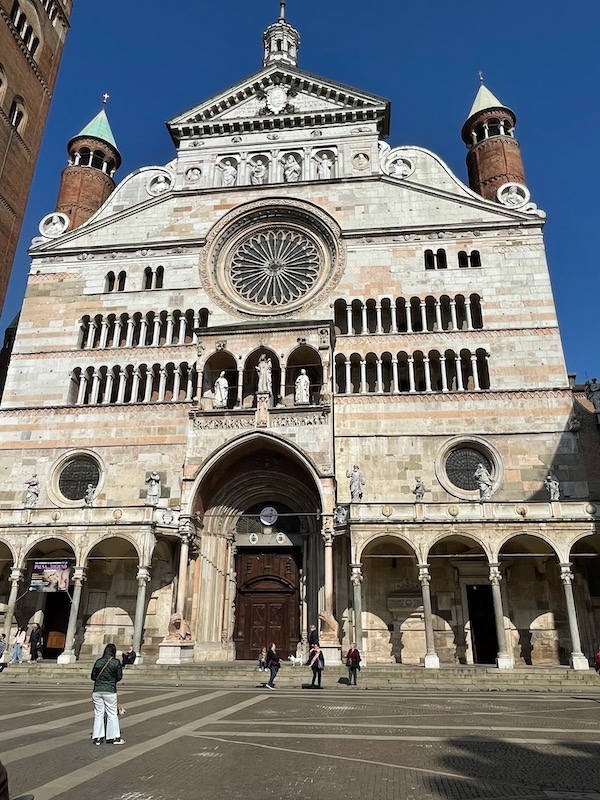
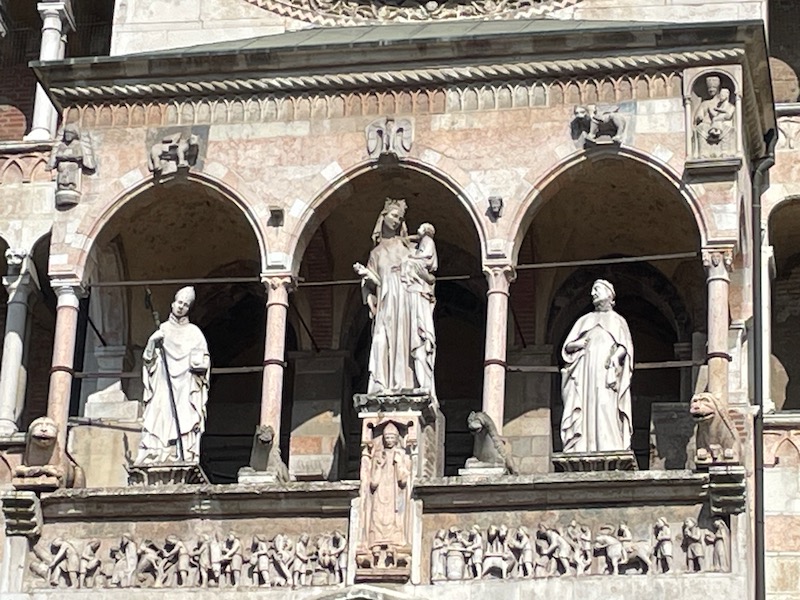
This is another Cathedral that is much darker on the inside than most Cathedrals (which to me are always very bland and white). The nave is separated from the side aisles by massive pillars. The entire interior is covered in frescoes. The fresco decoration of the main nave, created by various artists, dates to the first part of the 16th century.
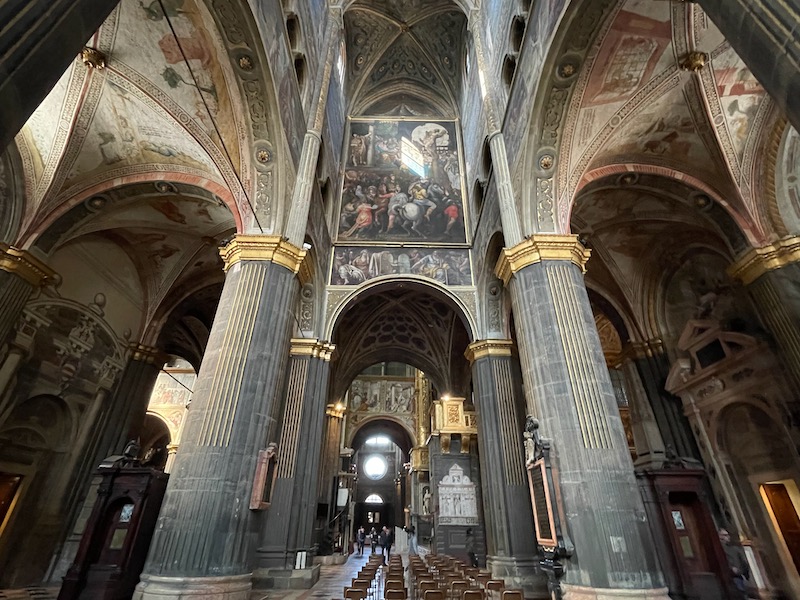

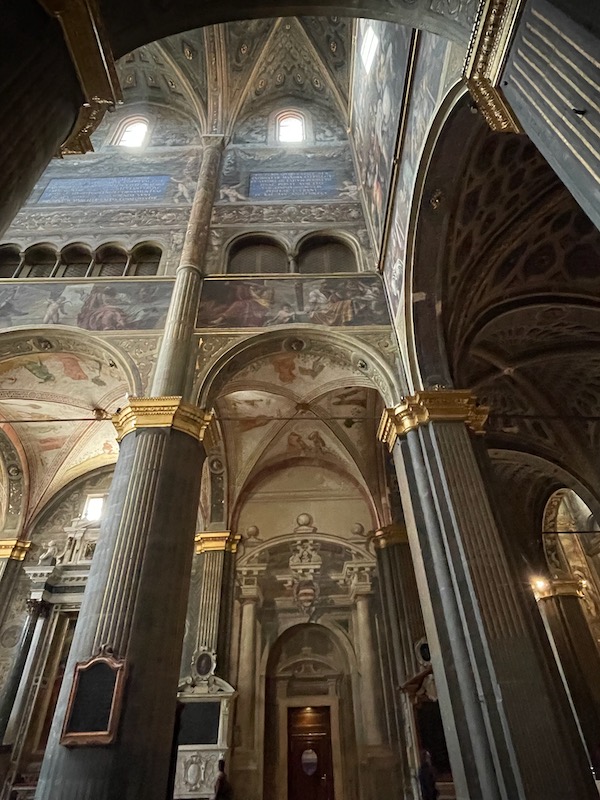
The main apse and altar with a large fresco depicting the Redeemer above.
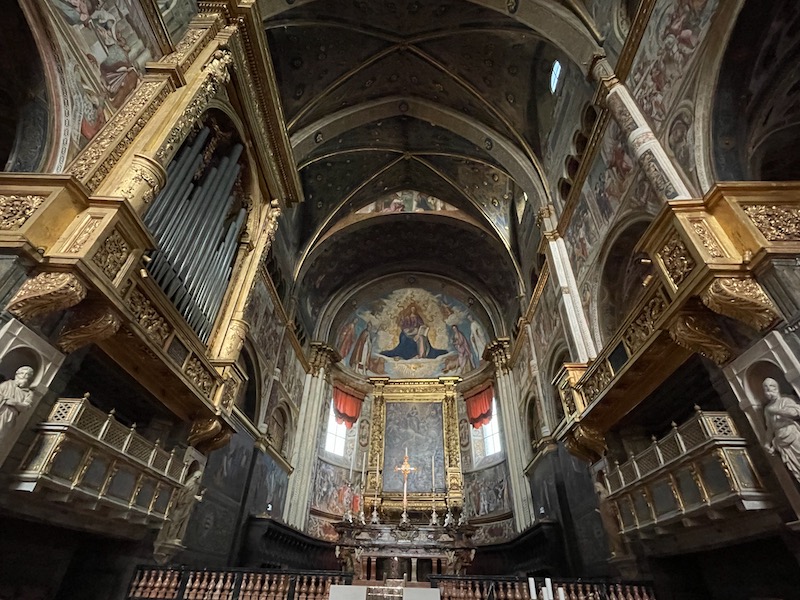
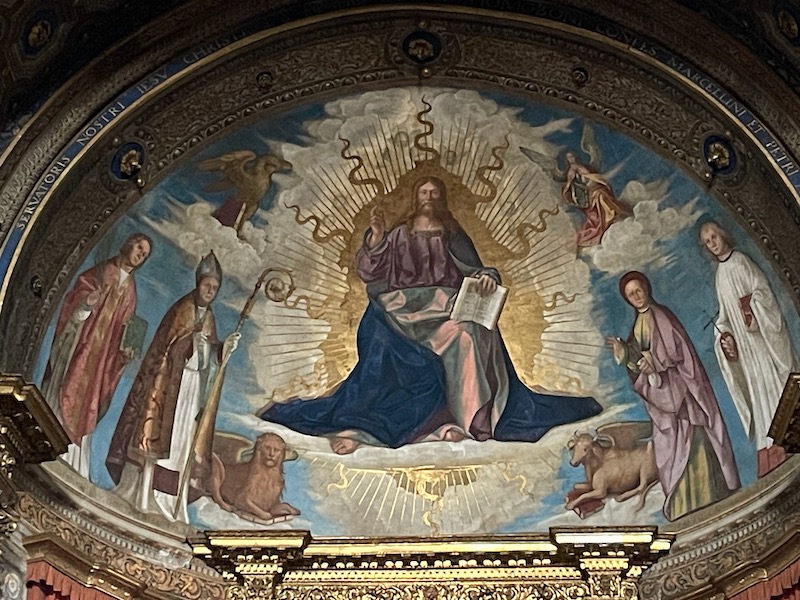
One of the side chapels is the Chapel of the Madonna del Popolo, which is elaborately decorated in gold Baroque decorations.
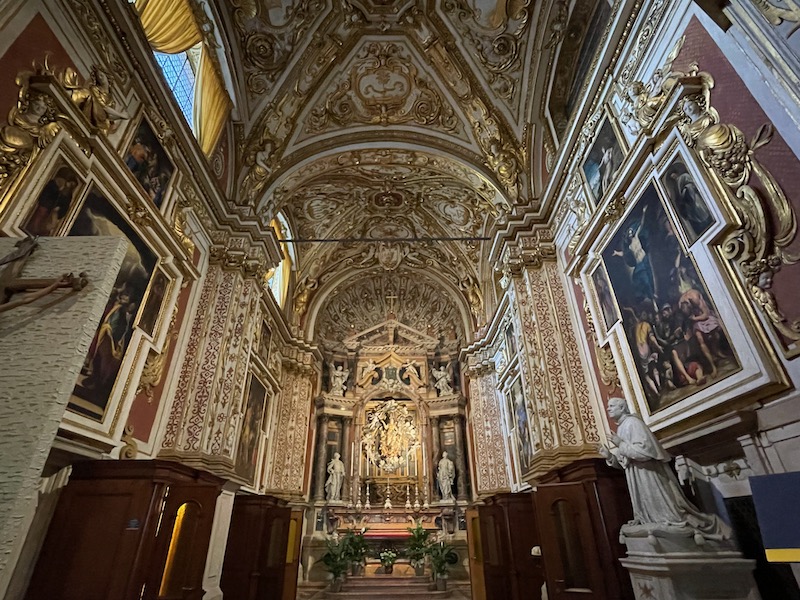
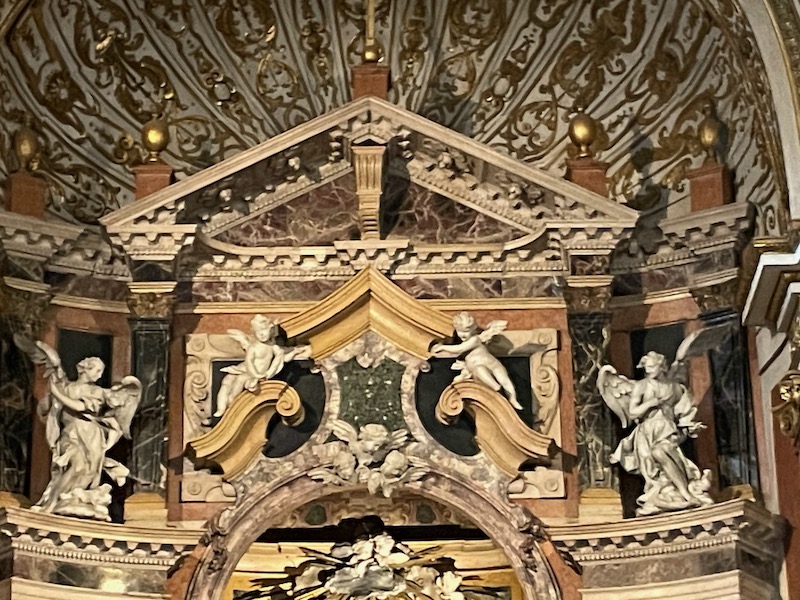
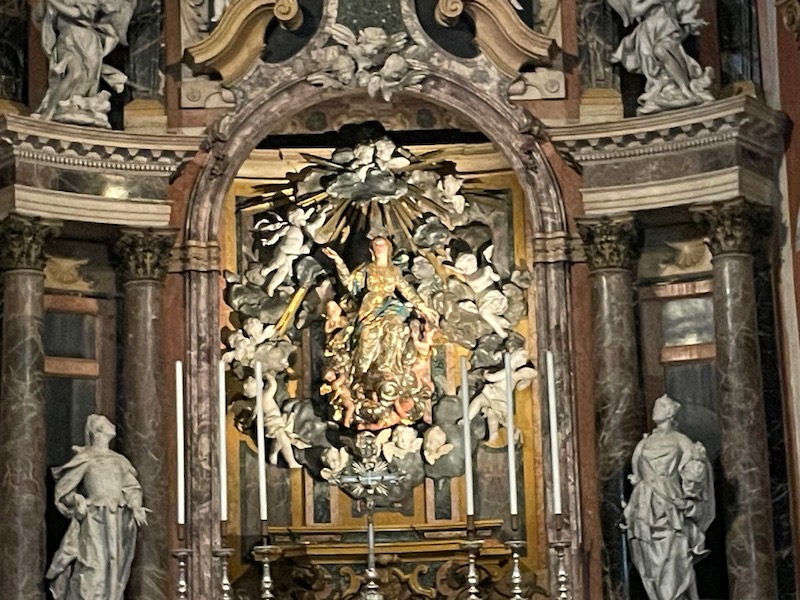
I wanted to try to get some more detailed pictures of some of the 16th-century frescoes in the nave. I don't have details on what each picture depicts, but they tend to cover stories of the Passion of Christ and the Stories of the Virgin.


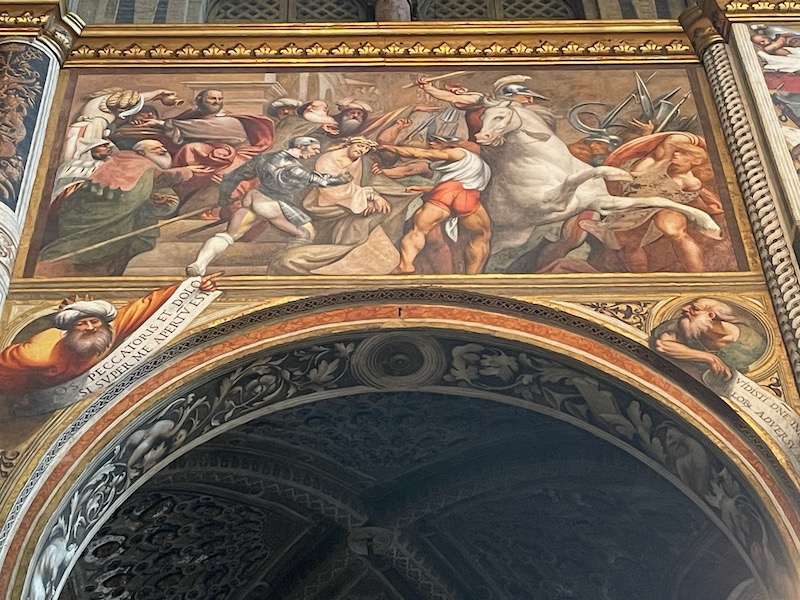
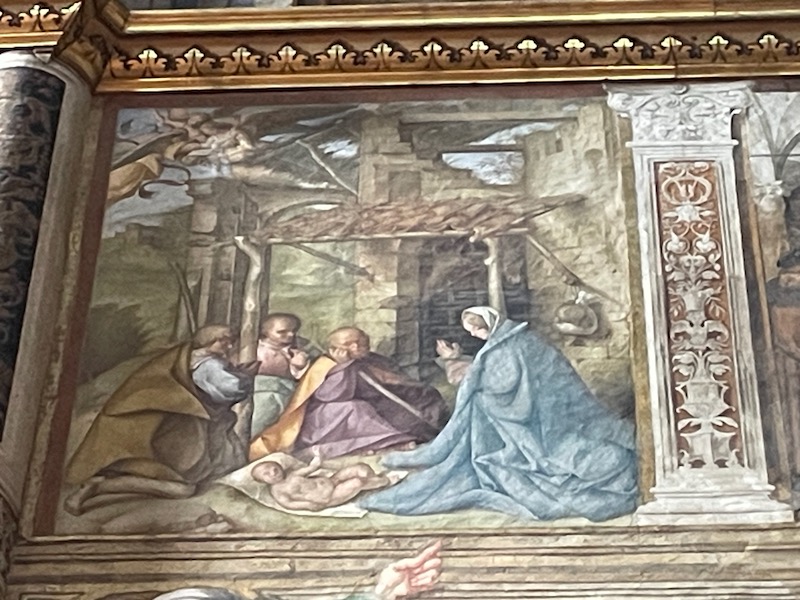
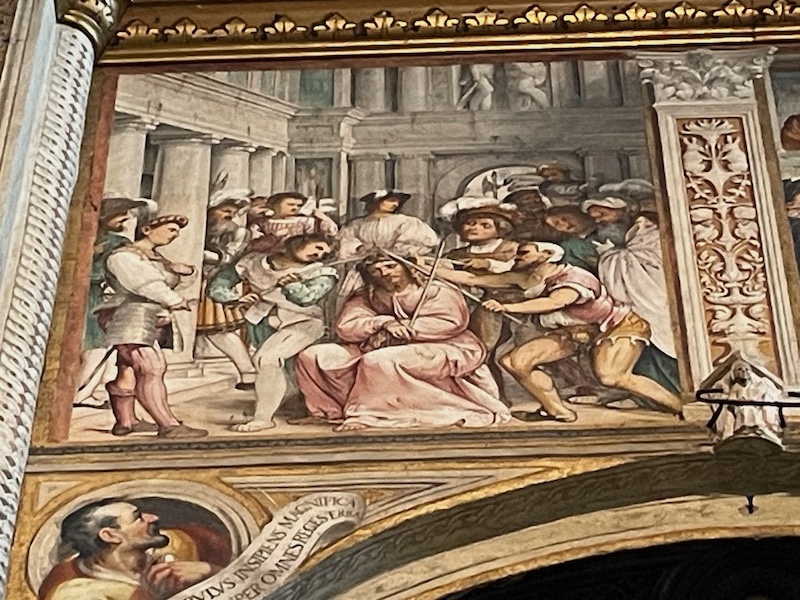
This is the back wall (the counter-façade) and it was painted 1520-1521, showing the Crucifixion.

Here you can see all of the brick from the side with the octagonal baptistry on one side.
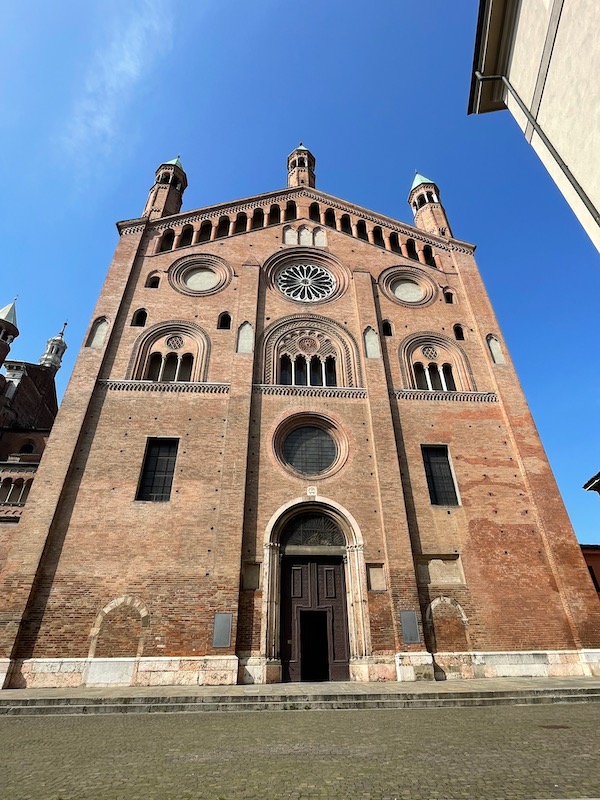
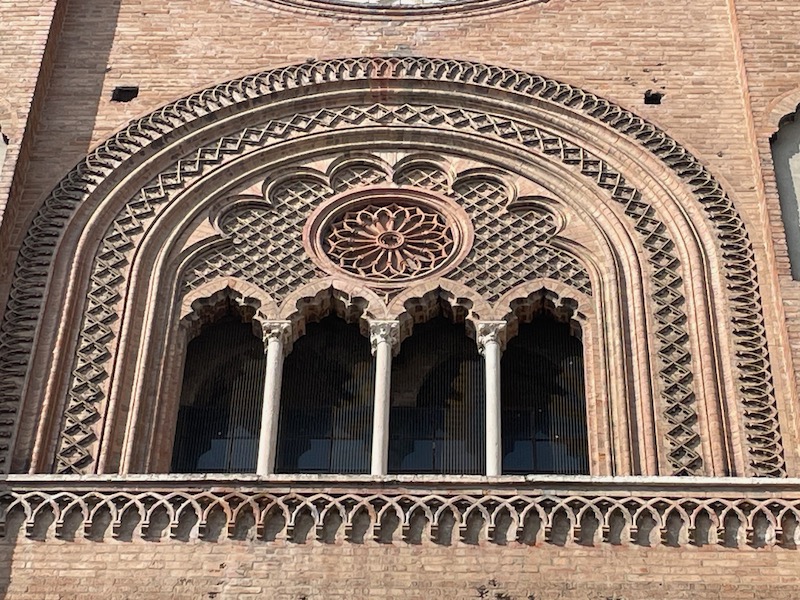
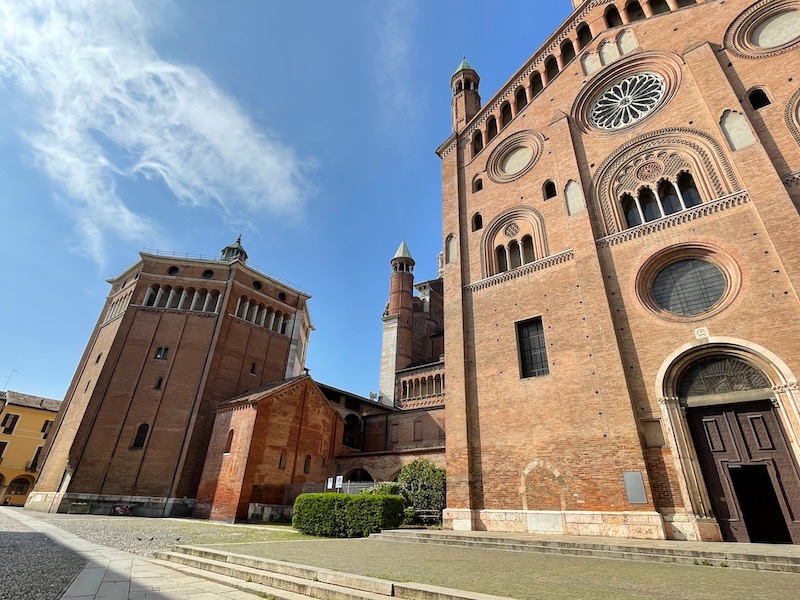
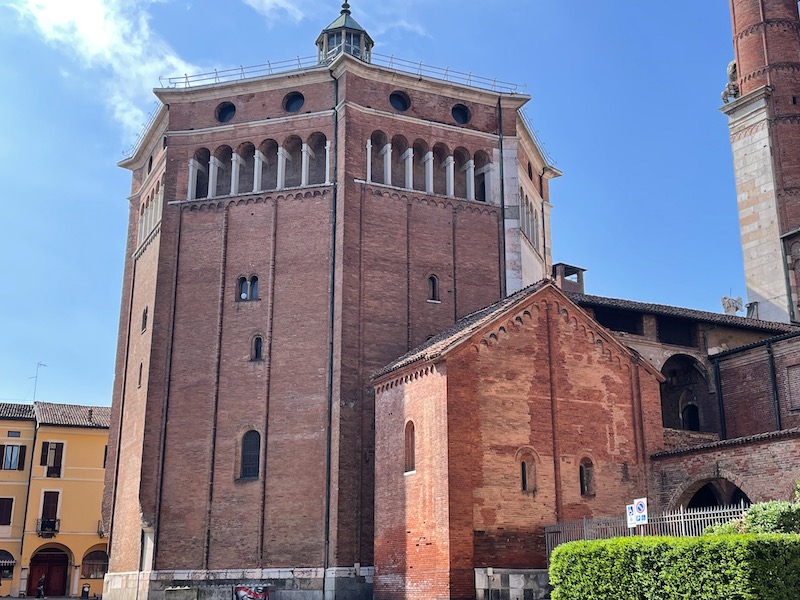
Here is another interesting view of the Baptistry ... you can see how it, just like the Cathedral, is built in brick and then one side was later covered with marble. As baptistry's go ... this one is pretty bland. Normally, they are totally covered on the inside with frescoes (like the Cathedral) but instead, this one is almost totally bare. In the middle is a 16th-century baptismal font made from a monolithic block of red marble from Verona. There are 2 altars: the altar of Saint Biagio and the altar of Our Lady of Sorrows.


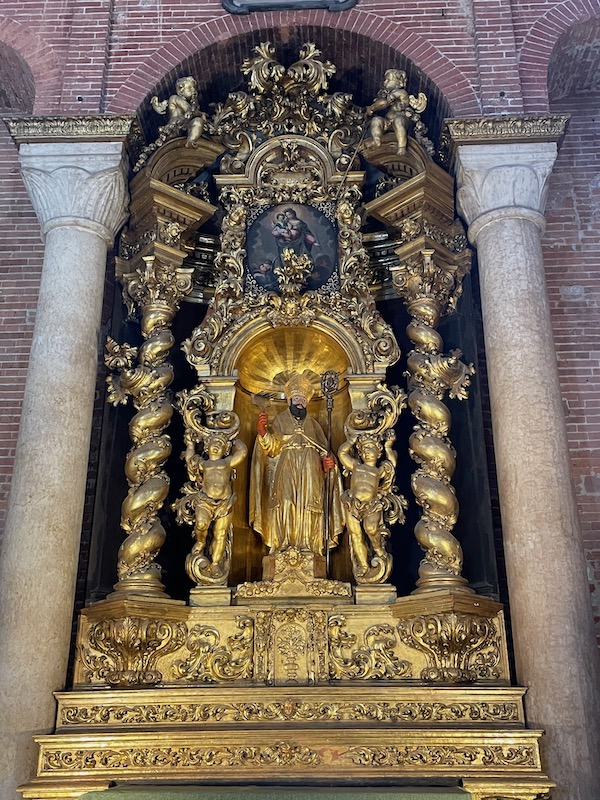
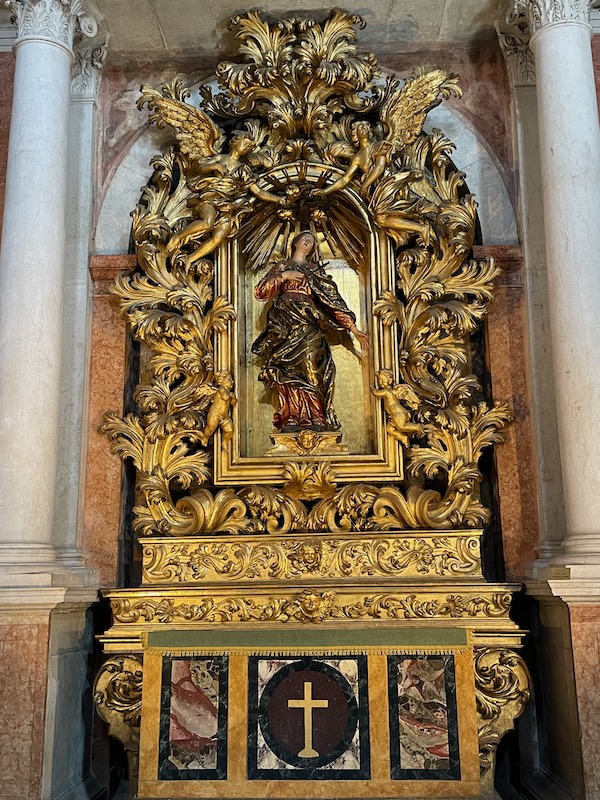
One more church ... the Chiesa di S Agostino. You may start seeing a theme here ... large brick churches that are pretty bare on the exterior. This one was built between 1339 and 1445 by the Augustinian order.
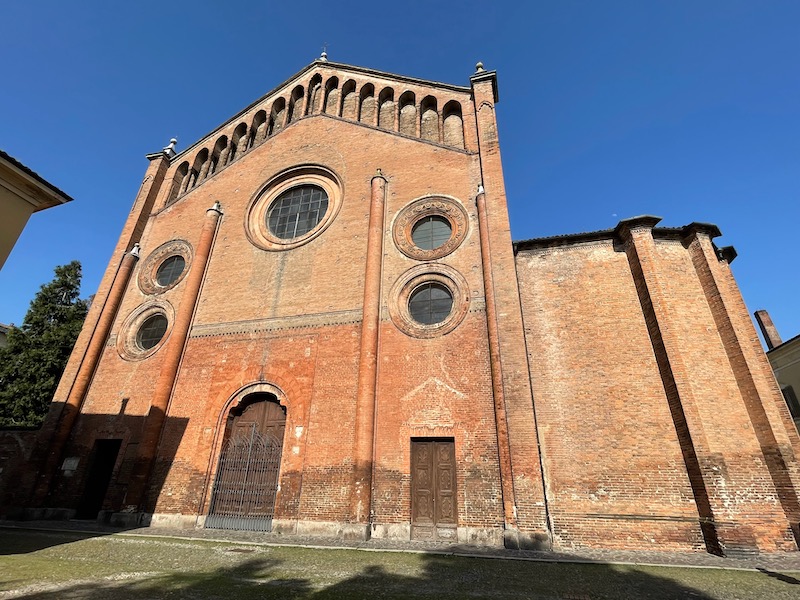

Similar to other churches, this also has the nave with large pillars separating it from the side aisles.
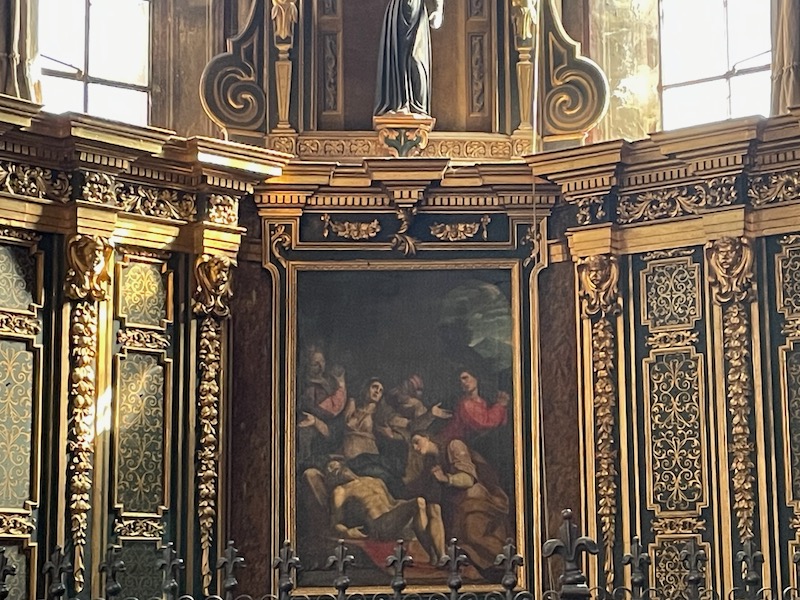

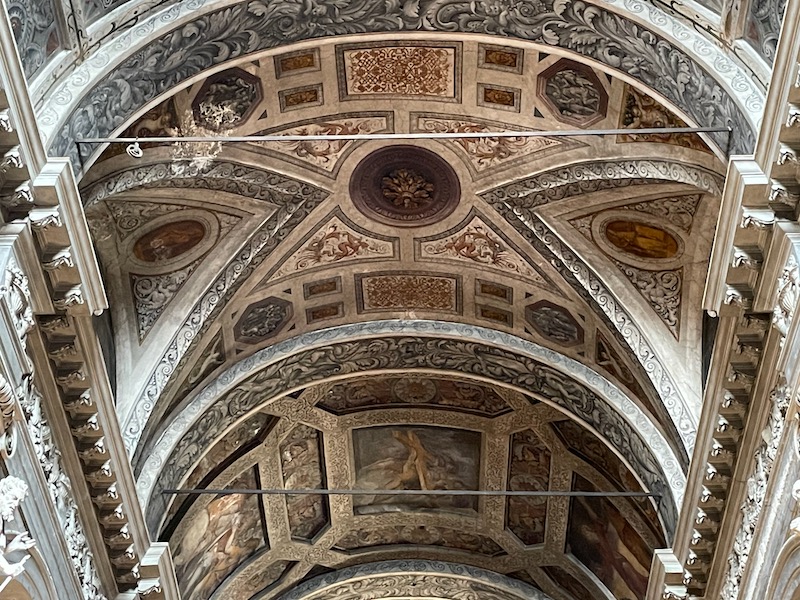

Some of the chapels have minimal decoration with only pieces of some very old frescoes remaining.
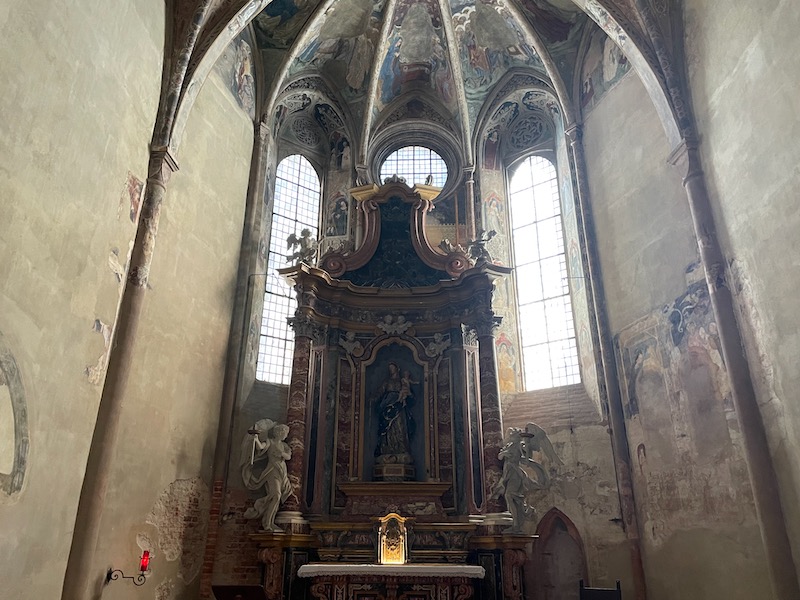
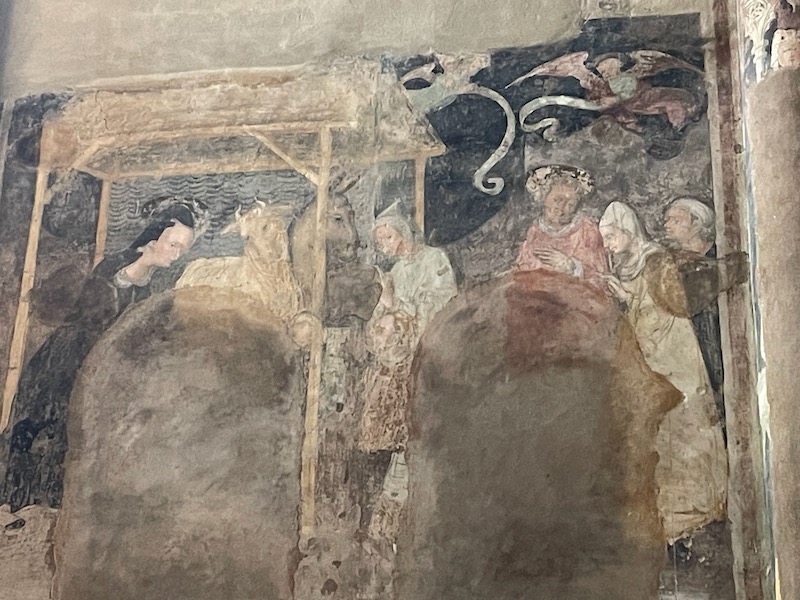
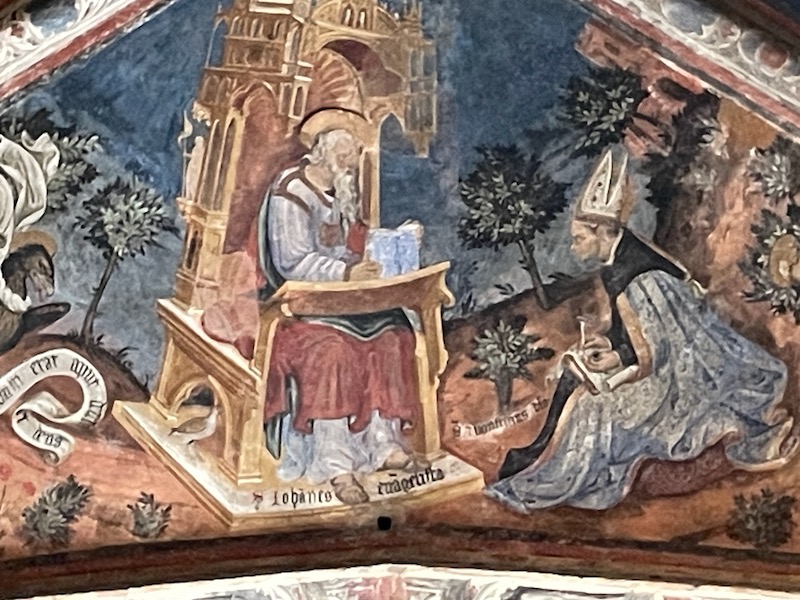
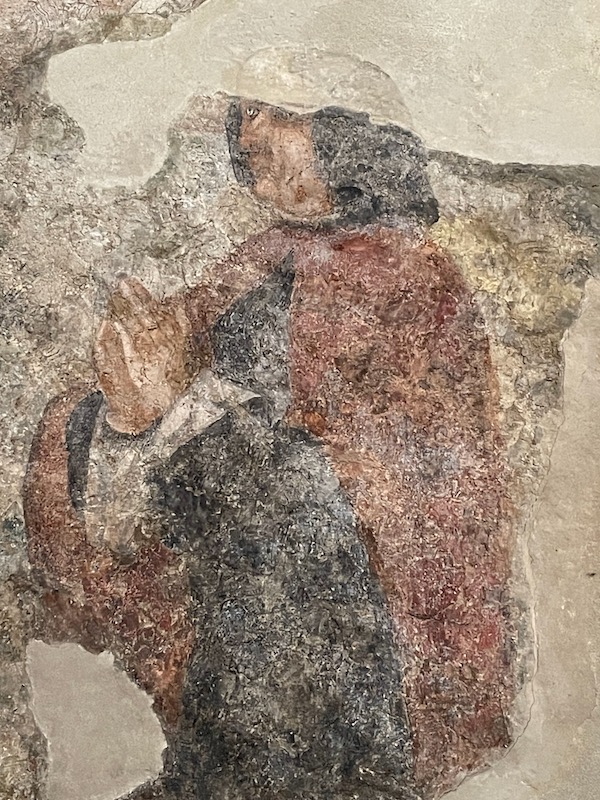
Others are much more elegant, with large paintings and large altarpieces.
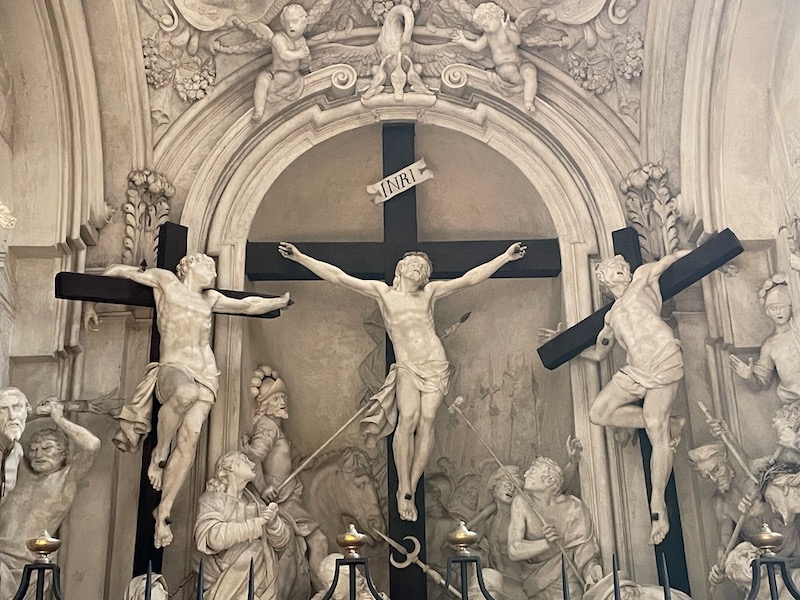
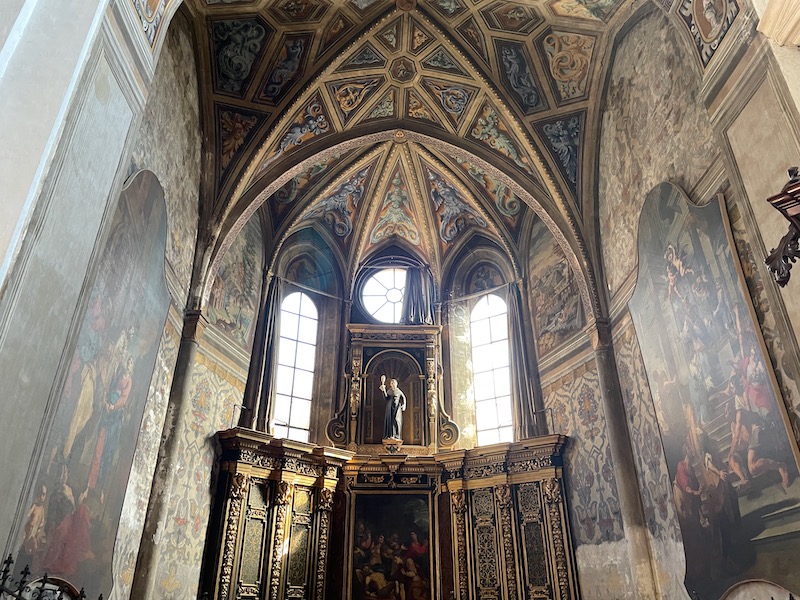
This painting was particularly striking for me, and it is one of the most valuable pieces of art inside the church. It shows the Madonna and Child enthroned between Saint John the Evangelist and Saint Augustine (for whom the church is named), dating from 1493.
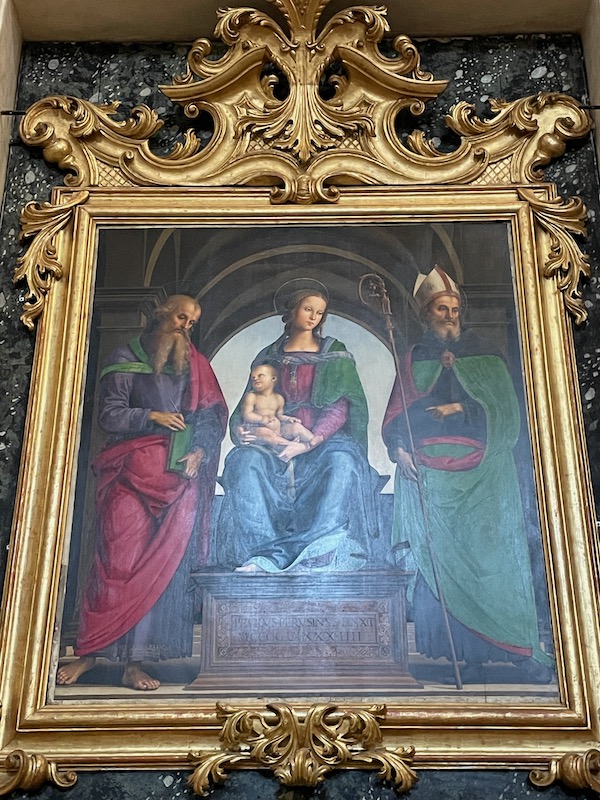
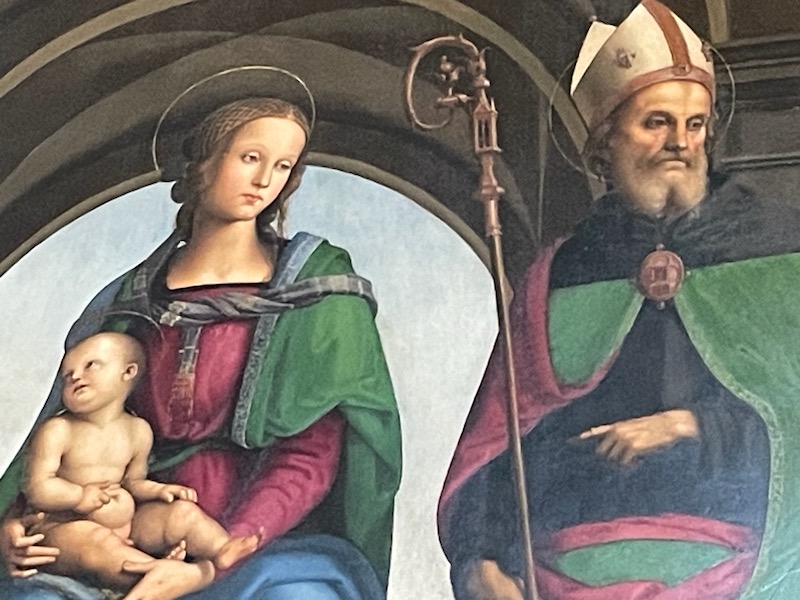
This is just a view of the buildings and towers.
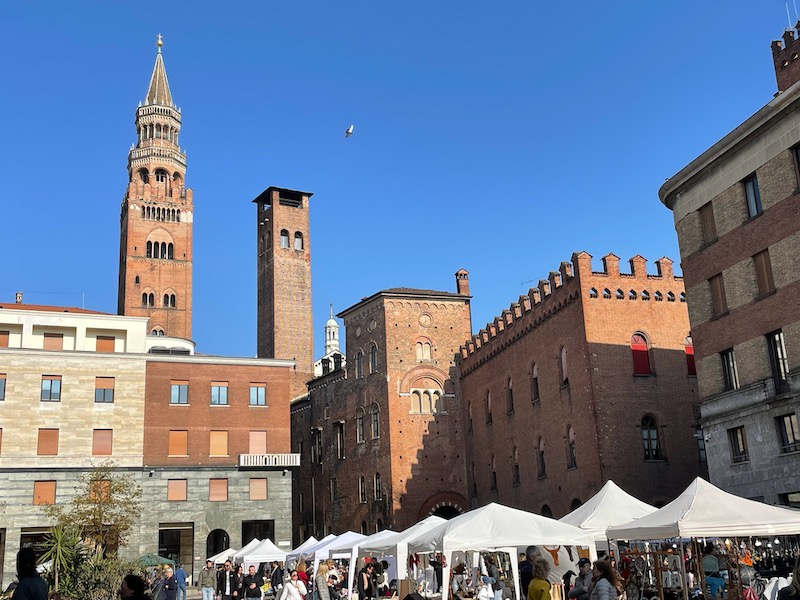
Another note here on where we stayed ... Palazzo Guazzoni Zaccaria dates back to the second half of the 1400s. It was closed and unused for decades until it was purchased from the state in 2013 and renovated. It has a lovely center open courtyard with a fountain and open loggia on 3 of the 4 sides. The renovations created several areas: a guesthouse with rooms, a boutique, and a space that can be rented for entertaining. In some cases, the ancient frescoes and painted wooden ceilings re-emerged.
